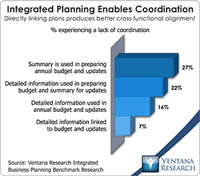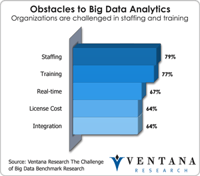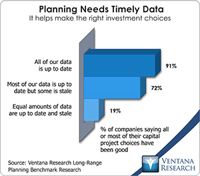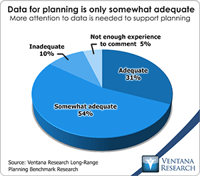IBM’s Big Data and Analytics Analyst Insights conference started me thinking about the longer-term potential impact of big data and related technologies on business management. I covered some of the near-term uses of big data and analytics in an earlier perspective. There are numerous uses of big data that can provide incremental improvements to existing processes and practices. Some of these will have a significant impact on changing business models, enabling new classes of products and...
Read More
Topics:
Big Data,
Planning,
Predictive Analytics,
Operational Performance Management (OPM),
Management,
Budgeting,
Analytics,
Business Analytics,
Business Collaboration,
IBM,
Business Performance Management (BPM),
Financial Performance Management (FPM),
Information Management (IM),
decision,
FPM,
Watson
IBM hosted the Big Data and Analytics Analyst Insights conference in Toronto recently to emphasize the strategic importance of this topic to the company and to highlight recent and forthcoming advancements in its big data and analytics software. Our firm followed the presentations with interest. My colleagues Mark Smith and Tony Cosentino have commented on IBM’s execution of its big data strategy and its approach to analytics. As well, Ventana Research has conducted benchmark research on ...
Read More
Topics:
Big Data,
Office of Finance,
Operational Performance Management (OPM),
MRO,
Analytics,
Business Analytics,
Business Intelligence,
IBM,
Operational Intelligence,
Business Performance Management (BPM),
Customer Performance Management (CPM),
Financial Performance Management (FPM),
Sales Performance Management (SPM),
FPM,
Maximo,
TM1,
Watson
Planview recently announced general availability of Planview Enterprise 11. The new release enhances the user experience through a comprehensive redesign of the interface to promote ease of use. The changes are intended to facilitate an integrated approach to long-range planning of capital projects and major corporate initiatives across departments. There’s an important difference between strategic and long-range planning, and this difference is the reason why long-range planning benefits from...
Read More
Topics:
Big Data,
Performance Management,
Planning,
Office of Finance,
Operational Performance Management (OPM),
Planview,
Reporting,
FEI,
FERF CEO,
Business Performance Management (BPM),
CFO,
Financial Performance Management (FPM),
Sales Performance Management (SPM),
Supply Chain Performance Management (SCPM),
Financial Performance Management,
FPM
I recently attended Vision 2013, IBM’s annual conference for users of its financial governance, risk management and sales performance management software. These three groups have little in common operationally, but they share software infrastructure needs and basic supporting software components such as reporting and analytics. Moreover, while some other major vendors’ user group meetings concentrate on IT departments, Vision focuses on business users and their needs, which is a welcome...
Read More
Topics:
Planning,
Reporting,
Budgeting,
closing,
XBRL,
Analytics,
Data Management,
IBM,
Business Performance Management (BPM),
CFO,
Financial Performance Management (FPM),
Financial Performance Management,
FPM,
SEC,
TM1,
Digital Technology













